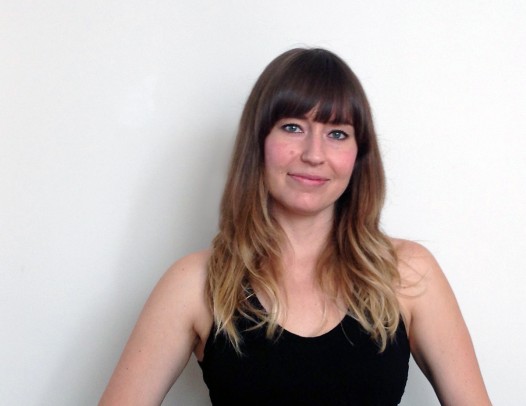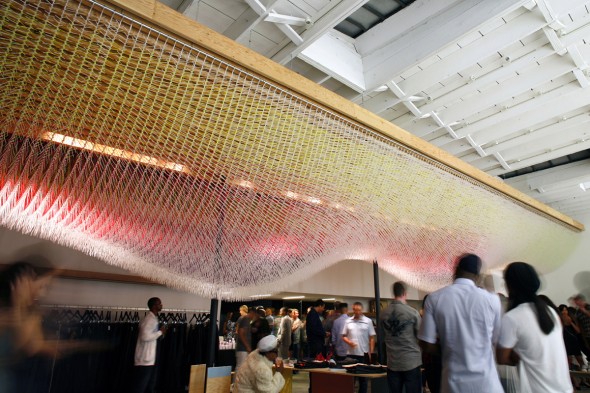Garofalo fellow selected for ‘contemporary vision’

Architect Molly Hunker received the first fellowship in memory of architecture professor Doug Garofalo, who died in 2011.
Doug Garofalo was an architect known for his experimental approach to his craft and revered for his dedication to students and staff.
So it’s only fitting that the first fellowship in the UIC professor’s name, awarded two years after his death at age 52, should go to an architect whose work includes a store canopy made of zip ties.
Molly Hunker, a faculty member in architecture at UCLA and Woodbury University and a designer at Talbot McLanahan Architecture in Venice, Calif., will teach undergraduate and grad students while pursuing her own studies.
“I think Molly has a contemporary vision of Doug’s practice early on,” said Robert Somo, director of the School of Architecture who was Garofalo’s friend and colleague.
“I think Doug would appreciate her as a colleague and as someone to support as he did for many others.”
Hunker is teaching a graduate seminar this semester that explores the notion of softness or plushness in architecture through upholstery and ceramics.
Her fourth-year undergraduate design studio centers around kitsch in architecture; the class recently took a field trip to Graceland.
Her work with students relates to her research for a large installation project to be finished at the end of the year, she said.
“I get to explore, along with my students, these things that I proposed for the fellowship,” said Hunker.
“Then in the spring I take all that knowledge that my students and I accumulated through the semester and I get to produce a project.”
Hunker, who received a bachelor of arts in urban geography and studio art from Dartmouth and a master’s in architecture degree from UCLA, has already completed some experimental projects of her own.
In graduate school Hunker and colleague Greg Corso founded the design collaborative SPORTS, with the idea of testing ideas quickly and inexpensively. They brought one of those ideas to a West Hollywood clothing store in the form of a canopy made of 100,000 zip ties, called “Life Will Kill You.”
Hunker was attracted to UIC for several reasons.
“Lots of people were really having fun with architecture, they were being really playful about it, winning lots of awards, lots of grants,” she said. “Something is happening over here.”
The student work she saw was another factor.
“I walked around and thought, ‘I have never seen work like this, this is really inspiring,’” she said.
The fellowship selection committee included three of Garofalo’s peers and colleagues. His widow, Chris Garofalo, gave the final approval after meeting Hunker.
“I was humbled to meet so many of Doug’s friends and colleagues, it was just really inspiring,” Hunker said.
“I think that’s very unique to this fellowship, something I didn’t anticipate.”
Garofalo, who joined UIC in 1987, was a pioneer in the use of advanced digital and conceptual models. His design for the Korean Presbyterian Church of New York was one of the earliest projects to implement this new way of practicing architecture.
“He was always reading to discuss ideas with you in every field, but also a kind of mad scientist in his office, putting stuff together trying out different materials, different technologies,” Somol said.
“I think that Molly also combines those two aspects.”

